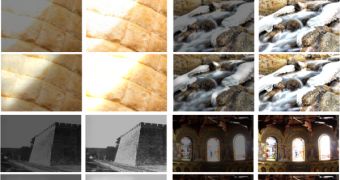The High Dynamic Range Image Hallucination tool courtesy of Microsoft is designed to adjust over-and under-exposed regions of a low dynamic range image with the addition of high dynamic range details. This is the description offered by Microsoft in the abstract that describes HDR hallucination. Through the video embedded at the bottom, courtesy of Long Zheng, you will be able to see this technology at work. Watch the video in order to access examples of the HDR image hallucinations. Also, the images included herein are designed to give you additional examples of the results delivered by HDR hallucination when applied to over- and under-exposed images.
"Our method is based on a simple assumption: there exist high quality patches in the image with similar textures as the regions that are over or under exposed. Hence, we can add high dynamic range details to a region by simply transferring texture details from another patch that may be under different illumination levels," further reads the description of the Microsoft High Dynamic Range Image Hallucination as put together by Lvdi Wang; Li-Yi Wei; Kun Zhou; Baining Guo; Heung-Yeung Shum.
Additionally, you will be able to access the research paper detailing Microsoft High Dynamic Range Image Hallucination by following this link. You will have to be a tad patient because it takes its time to load, but it's a fascinating read.
Microsoft High Dynamic Range Image Hallucination is essentially an algorithm. This algorithm allows users to map out a texture from an image and automatically apply it in real time to the under-exposed or over-exposed regions. These corresponding areas in the image will be hallucinated, or patched.
"Experiments demonstrate that our simple, yet effective approach is able to significantly increase the amount of texture details in a wide range of common scenarios, with a modest amount of user interaction," Microsoft added in the High Dynamic Range Image Hallucination research paper.

 14 DAY TRIAL //
14 DAY TRIAL //